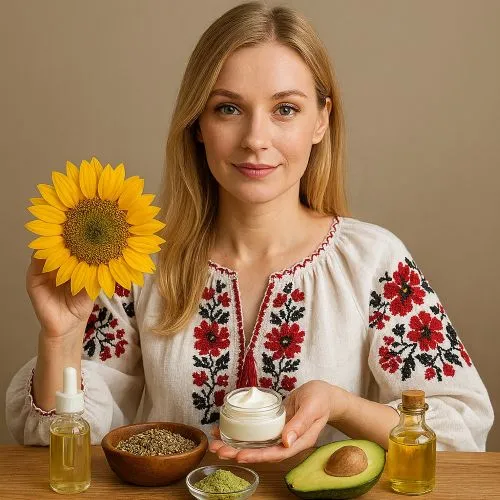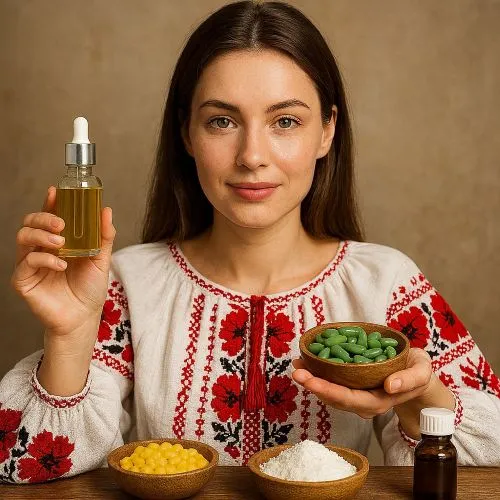-
 DIY: Video master classes
DIY: Video master classes
-
 Aromatherapy
Aromatherapy
-
 Felting master classes
Felting master classes
-
 Eating at home
Eating at home
-
 DIY cosmetics for children
DIY cosmetics for children
-
 Cooking recipes
Cooking recipes
-
 Detergents, cleaning products with your own hands
Detergents, cleaning products with your own hands
-
 Soap making as a business
Soap making as a business
-
 Natural cosmetics. Raw materials for cosmetics and soap.
Natural cosmetics. Raw materials for cosmetics and soap.
-
 Natural oils in cosmetics
Natural oils in cosmetics
-
 News
News
-
 Recipes for balms and conditioners
Recipes for balms and conditioners
-
 Bath Bomb Recipes
Bath Bomb Recipes
-
 Cream recipes. Cream making.
Cream recipes. Cream making.
-
 Lotion recipes. Gel recipes.
Lotion recipes. Gel recipes.
-
 Mask recipes
Mask recipes
-
 Soap recipes. Base soap. Soap from scratch.
Soap recipes. Base soap. Soap from scratch.
-
 Recipes for all occasions
Recipes for all occasions
-
 Natural shampoo recipes
Natural shampoo recipes
-
 Healthy Nutrition Recipes
Healthy Nutrition Recipes
-
 Scrub recipes. Massage tiles. Ubtan
Scrub recipes. Massage tiles. Ubtan
-
 DIY candles
DIY candles
-
 Reference materials, questions, tips
Reference materials, questions, tips
-
 Startup - soap production
Startup - soap production
-
 Hair care. Tips, recipes
Hair care. Tips, recipes
-
 Facial skin care. Cleansers.
Facial skin care. Cleansers.
-
 Body care. Tips, recipes
Body care. Tips, recipes
-
 Photo Reviews
Photo Reviews
-
 Chocolate Handmade
Chocolate Handmade
Raw materials Made in Ukraine review of the best ingredients with international certification
 The global cosmetic industry is increasingly focused on ingredient origin, ethical sourcing, and certified quality. For cosmetic artisans and brands worldwide, finding a reliable supply of high-quality raw materials is crucial for success. Ukraine, with its rich agricultural heritage and fertile black soil, has emerged as a key source of potent and pure natural ingredients. This article delves into the best Ukrainian raw materials that boast international certification, offering detailed recipes and highlighting the benefits of using these exceptional ingredients in your cosmetic formulations.
The global cosmetic industry is increasingly focused on ingredient origin, ethical sourcing, and certified quality. For cosmetic artisans and brands worldwide, finding a reliable supply of high-quality raw materials is crucial for success. Ukraine, with its rich agricultural heritage and fertile black soil, has emerged as a key source of potent and pure natural ingredients. This article delves into the best Ukrainian raw materials that boast international certification, offering detailed recipes and highlighting the benefits of using these exceptional ingredients in your cosmetic formulations.
Why Ukrainian Ingredients Are Gaining International Recognition
The quality of Ukrainian cosmetic ingredients is not just a matter of tradition but is backed by a commitment to modern standards and sustainability.
-
Superior Soil and Climate: Ukraine's famous "chernozem" or black soil is incredibly rich in minerals, which results in plants with higher concentrations of active compounds. The country's diverse climate zones allow for a wide variety of botanicals to thrive.
-
International Certification: Many Ukrainian manufacturers and suppliers are aligning with or have already achieved international certifications like Ecocert and ISO 9001. This ensures that the ingredients meet stringent quality, safety, and organic standards required for export to the European Union and other markets.
-
Ethical and Sustainable Practices: An increasing number of Ukrainian producers are embracing eco-friendly farming and harvesting methods, which appeal to the growing segment of consumers who prioritize sustainability.
-
Potency and Purity: Ingredients grown in less industrialized areas often have a lower risk of contamination from pesticides or heavy metals, making them a cleaner and more potent choice for natural cosmetic formulations.
Standout Ukrainian Raw Materials and Their Properties
Ukrainian suppliers offer a diverse range of high-quality ingredients, from oils and extracts to clays and unique patented complexes.
-
Hemp Seed Oil: Celebrated for its perfect balance of omega-3 and omega-6 fatty acids, Ukrainian-sourced hemp seed oil is a powerful emollient that soothes inflammation and deeply moisturizes the skin without clogging pores.
-
Sea Buckthorn Oil: Known for its vibrant orange color and high concentration of vitamins C and E, as well as beta-carotene, sea buckthorn oil is a potent antioxidant. It promotes skin regeneration and is excellent for anti-aging and healing formulations.
-
Alginate Masks: Ukrainian companies offer high-quality alginate peel-off mask bases made from brown algae. These masks are used for their intensive hydrating and lifting effects, often enriched with local extracts like acerola or calendula.
-
Clays: Ukrainian cosmetic clays, such as green and red clay, are highly purified and often have Ecocert certification. They are rich in minerals and are excellent for detoxifying and purifying face and body masks.
-
Herbal Extracts: Centuries of herbalism have given Ukraine a wealth of knowledge about local plants. Extracts from chamomile, calendula, linden, and rosehip are widely used for their anti-inflammatory, soothing, and antioxidant properties.
Nuances of Preparation and Advantages over Industrial Analogues
Using certified Ukrainian raw materials gives your homemade cosmetics a significant edge.
-
Ingredient Traceability: Reputable Ukrainian suppliers provide documentation like Certificates of Analysis, allowing you to trace the ingredient from farm to your lab. This transparency is rarely available with industrial, mass-market products.
-
Superior Efficacy: Because these ingredients are often more potent and purer, you can use smaller quantities to achieve a better result, making your formulations more cost-effective in the long run.
-
Unique Formulations: The availability of unique local ingredients allows you to create distinctive products that stand out from the competition. For example, using Ukrainian sturgeon caviar extract or specific herbal blends can be a powerful marketing tool.
-
Ethical Appeal: By sourcing from Ukrainian producers, you are supporting local economies and sustainable agricultural practices, which is a strong selling point for a conscious consumer base.
Three Detailed Recipes with Certified Ukrainian Ingredients
These recipes are designed to produce high-quality, effective cosmetic products using the best Ukrainian raw materials.
Recipe 1: Regenerating Sea Buckthorn Facial Serum
This serum is packed with antioxidants and vitamins to repair and rejuvenate the skin.
-
Prepare the ingredients. Measure out 40g of certified Ukrainian hemp seed oil, 5g of Ukrainian sea buckthorn oil, 4g of vitamin E, and 1g of a cosmetic-grade preservative.
-
Combine the oils. In a sterilized beaker, gently pour the hemp seed oil. Add the sea buckthorn oil and vitamin E. Stir gently until fully blended.
-
Add the preservative. Incorporate the preservative and stir once more to ensure it is evenly distributed throughout the mixture.
-
Finalize the serum. Transfer the finished serum into a dark, sterilized glass bottle with a dropper.
Recommendations for Use: Apply 2-3 drops to clean, damp skin in the evening. Sea buckthorn oil can stain, so use a small amount.
Storage: Store in a cool, dark place to preserve the delicate fatty acids and vitamins. The shelf life is approximately 6 months.
Recipe 2: Soothing Chamomile and Green Clay Mask
This mask combines the detoxifying power of clay with the calming properties of Ukrainian chamomile extract.
-
Prepare the ingredients. Weigh 30g of certified Ukrainian green clay powder, 10g of chamomile powder, and 25g of distilled water or chamomile hydrosol.
-
Combine the dry ingredients. In a sterilized bowl, mix the green clay powder and the dried chamomile powder.
-
Create the mask. Slowly pour the liquid into the dry ingredients. Mix thoroughly with a spatula to create a smooth, thick paste.
-
Ready for use. Apply the mask immediately, as it cannot be stored for long due to the water content.
Recommendations for Use: Apply an even layer to clean skin, avoiding the eye area. Leave on for 10-15 minutes, then rinse off with warm water. Use once or twice a week.
Storage: Prepare this mask fresh for each use to ensure maximum efficacy and prevent bacterial growth.
Recipe 3: Nourishing Cocoa and Sunflower Body Butter
This body butter offers deep hydration and protection, utilizing locally sourced oils and butters.

-
Prepare the ingredients. Weigh 60g of Ukrainian-sourced cocoa butter, 30g of sunflower oil, 10g of beeswax, and 1g of a natural fragrance (e.g., vanilla essential oil).
-
Melt the butters. Gently melt the cocoa butter and beeswax in a double boiler until fully liquid.
-
Mix with oils. Remove from heat and add the sunflower oil, stirring until the mixture is uniform.
-
Add fragrance. Once the mixture has cooled slightly, add the essential oil and mix thoroughly.
-
Pour into a container. Pour the liquid butter into a sterilized jar before it fully solidifies.
Recommendations for Use: Massage a small amount into the skin after a shower while the skin is still slightly damp.
Storage: Keep in a cool, dark place. The shelf life is up to one year.
Mylo Opt Cosmetics Blog – Your Reliable Guide to Beauty and Care
Welcome to the Mylo Opt cosmetics blog! Here, you will find valuable advice, interesting recipes, and professional recommendations for creating soap, cosmetics, and candles with your own hands. Our blog is designed for anyone passionate about natural cosmetics, looking for new ideas, and wanting to learn more about producing high-quality skincare and haircare products. We share tested recipes, useful tips, and the latest news from the world of cosmetics.
Why Choose the Mylo Opt Cosmetics Blog?
Mylo Opt is not just an online store; it is a community of people passionate about creating natural cosmetics. Here are a few reasons why our blog will be useful to you:
- Experience and Expertise: Our authors are experienced cosmetologists, soap makers, and aromatherapy specialists. We share reliable and tested recipes that have undergone thorough testing and received positive feedback.
- Credibility and Authority: We ensure that all information in our blog is up-to-date and reliable. We reference scientific research and verified sources so that you can trust the quality of the information provided.
- Reader-Focused: Our content is tailored to you – our readers. We strive to answer your questions, solve your problems, and inspire new achievements in the world of natural cosmetics.
Popular Products from the Mylo Opt Online Store
Before we move on to recipes and tips, let us introduce you to the most popular products from our online store, which will help you create high-quality and natural cosmetics:
- Soap Bases: High-quality soap bases allow you to create beautiful and beneficial handmade soaps. We offer glycerin bases, bases with added oils and extracts, as well as transparent and white bases.
- Fragrance Oils and Fragrances: Give your products a unique scent with our fragrance oils and fragrances. We offer a wide range of scents – from fresh and floral to spicy and woody.
- Essential Oils: Essential oils are natural components that not only add fragrance to products but also offer beneficial properties for the skin and hair. Our range includes lavender, mint, eucalyptus, lemon, and many other oils.
- Active Ingredients: Vitamins, antioxidants, hyaluronic acid, and other active ingredients help improve the properties of your cosmetics. We offer only tested and high-quality components.
- Pigments and Dyes: Give your products bright and lasting colors with our pigments and dyes. They are safe for the skin and suitable for use in soap, cosmetics, and candles.
- Emulsifiers and Thickeners: To create creams and lotions, you will need emulsifiers and thickeners. We offer quality ingredients that help you achieve the desired consistency and stability of the product.
- Soap and Candle Molds: Create unique items with our soap and candle molds. Our range includes molds of various sizes and designs.
- Everything for Candles: Wax, wicks, fragrances, and dyes for candles – we have everything you need to create beautiful and fragrant candles.
Recipes and Tips for Making Handmade Soap
Cold Process Soap for Beginners
Making cold process soap is an exciting process that allows you to control all the ingredients and create unique recipes. Here is one simple cold process soap recipe for beginners:
Ingredients:
- 500 g olive oil
- 300 g coconut oil
- 200 g palm oil
- 150 g castor oil
- 120 g lye (sodium hydroxide)
- 300 ml distilled water
- Essential oils (lavender, mint, eucalyptus)
- Pigments or natural dyes (optional)
Process:
- Prepare all ingredients and tools. Always use protective gloves and goggles, as lye can be dangerous.
- Weigh the lye and water. Slowly add the lye to the water, stirring until it fully dissolves. Allow the mixture to cool to 40-45°C.
- Weigh the oils and melt them in a water bath. When the oils and lye solution reach the same temperature (about 40-45°C), slowly pour the lye into the oils, stirring constantly.
- Use an immersion blender to mix until trace (when the mixture thickens and leaves a trail when stirred).
- Add essential oils and pigments if desired. Mix thoroughly.
- Pour the mixture into a prepared mold and cover with a towel. Let the soap harden for 24-48 hours.
- Remove the soap from the mold and cut it into bars. Allow the soap to cure for 4-6 weeks before use.
Homemade Cosmetics Recipes
DIY Moisturizing Cream
Creating a moisturizing cream at home allows you to control the ingredients and adapt the recipe to your needs. Here is a simple recipe for a moisturizing cream:
Ingredients:
- 50 ml rose water
- 50 ml distilled water
- 10 g emulsifier (e.g., Olivem 1000)
- 10 ml jojoba oil
- 5 ml avocado oil
- 5 drops lavender essential oil
- 2 drops tea tree essential oil
Process:
- Weigh all the ingredients.
- In a water bath, melt the emulsifier with the oils until smooth.
- Separately, heat the water phase (rose water and distilled water) to the same temperature as the oil phase.
- Slowly pour the water phase into the oil phase, stirring constantly.
- Use an immersion blender to emulsify until you achieve a creamy consistency.
- Add essential oils and mix thoroughly.
- Pour the cream into a sterilized jar and allow it to cool.
DIY Candle Recipes
Aromatic Soy Candle
Creating aromatic candles is a creative process that allows you to experiment with scents and designs. Here is a simple recipe for a soy candle:
Ingredients:
- 200 g soy wax
- 20 ml fragrance oil (e.g., vanilla or lavender)
- Wick for candles
- Dyes (optional)
- Glass or metal candle mold
Process:
- Melt the soy wax in a water bath until liquid.
- Add the fragrance oil and dyes if desired. Mix thoroughly.
- Secure the wick in the center of the candle mold.
- Slowly pour the melted wax into the mold, holding the wick.
- Allow the candle to fully harden (about 24 hours).
- Trim the wick to the desired length and enjoy your aromatic candle.
Tips for Beginners in Cream Making
- Learn the Basics: Before starting to create creams, it is important to learn the basic principles and ingredients used in cream making.
- Experiment with Formulas: Do not be afraid to experiment with different ingredients and proportions to find the perfect formula for your skin.
- Use Quality Ingredients: The effectiveness and safety of your product depend on the quality of the ingredients. Always choose tested and natural components.
- Maintain Hygiene: It is important to maintain cleanliness and sterility when creating cosmetics to avoid contamination and spoilage of the product.
- Start with Simple Recipes: For beginners, it is best to start with simple recipes to master the basic techniques and principles of cream making.
Conclusion
Our Mylo Opt cosmetics blog is your reliable source of information and inspiration in the world of natural cosmetics. We share useful tips, tested recipes, and the latest news to help you create quality and effective products for skin, hair, and home care. Subscribe to our blog, follow the updates, and discover new opportunities in the world of natural cosmetics with Mylo Opt!





